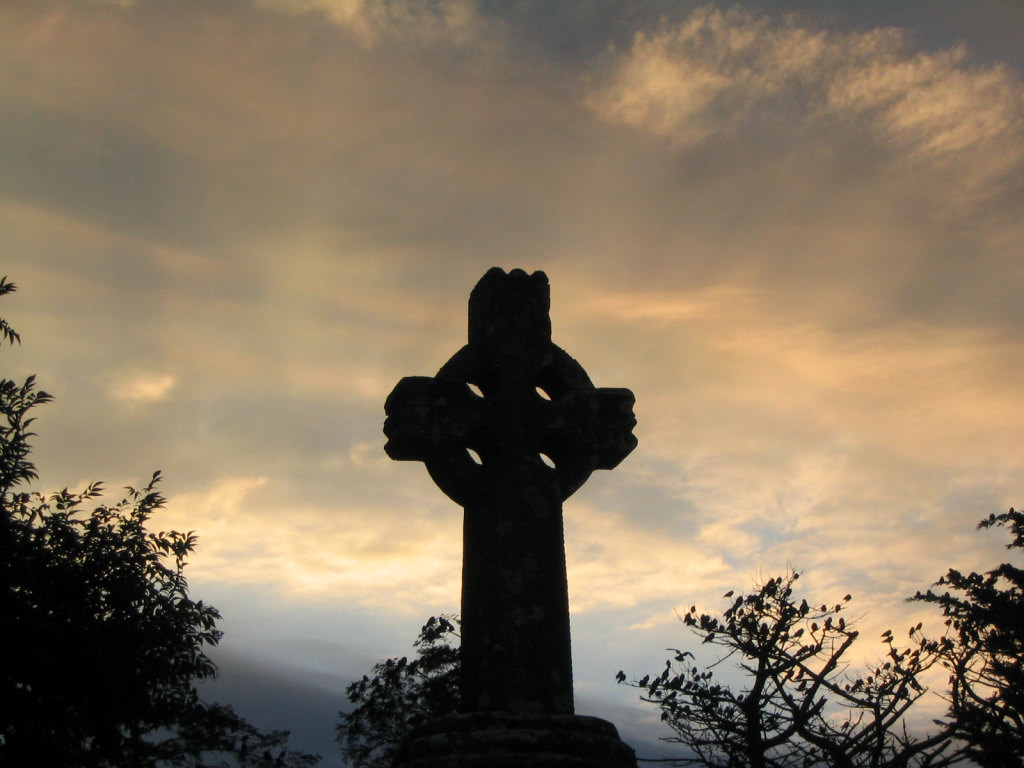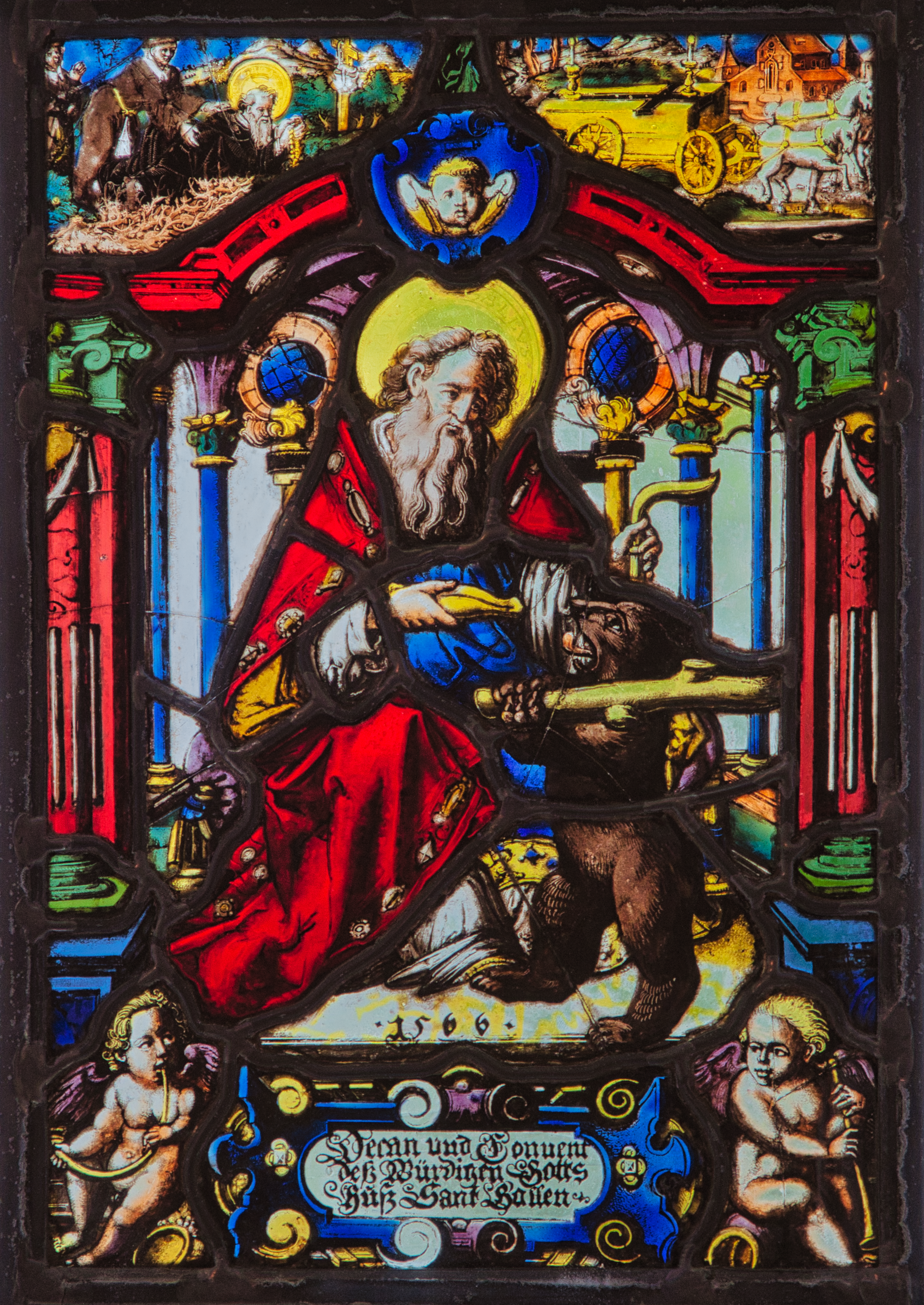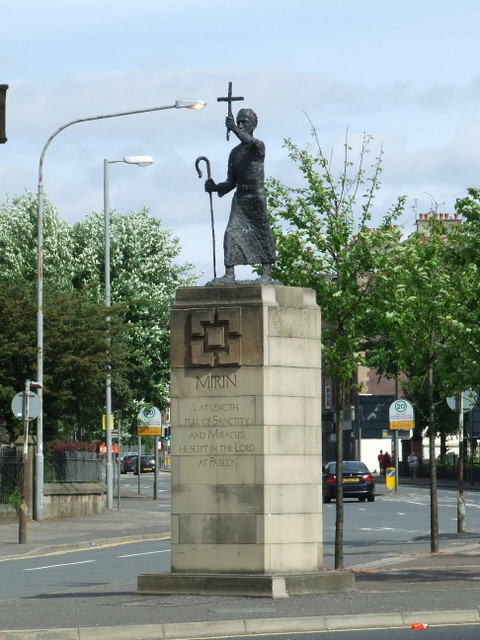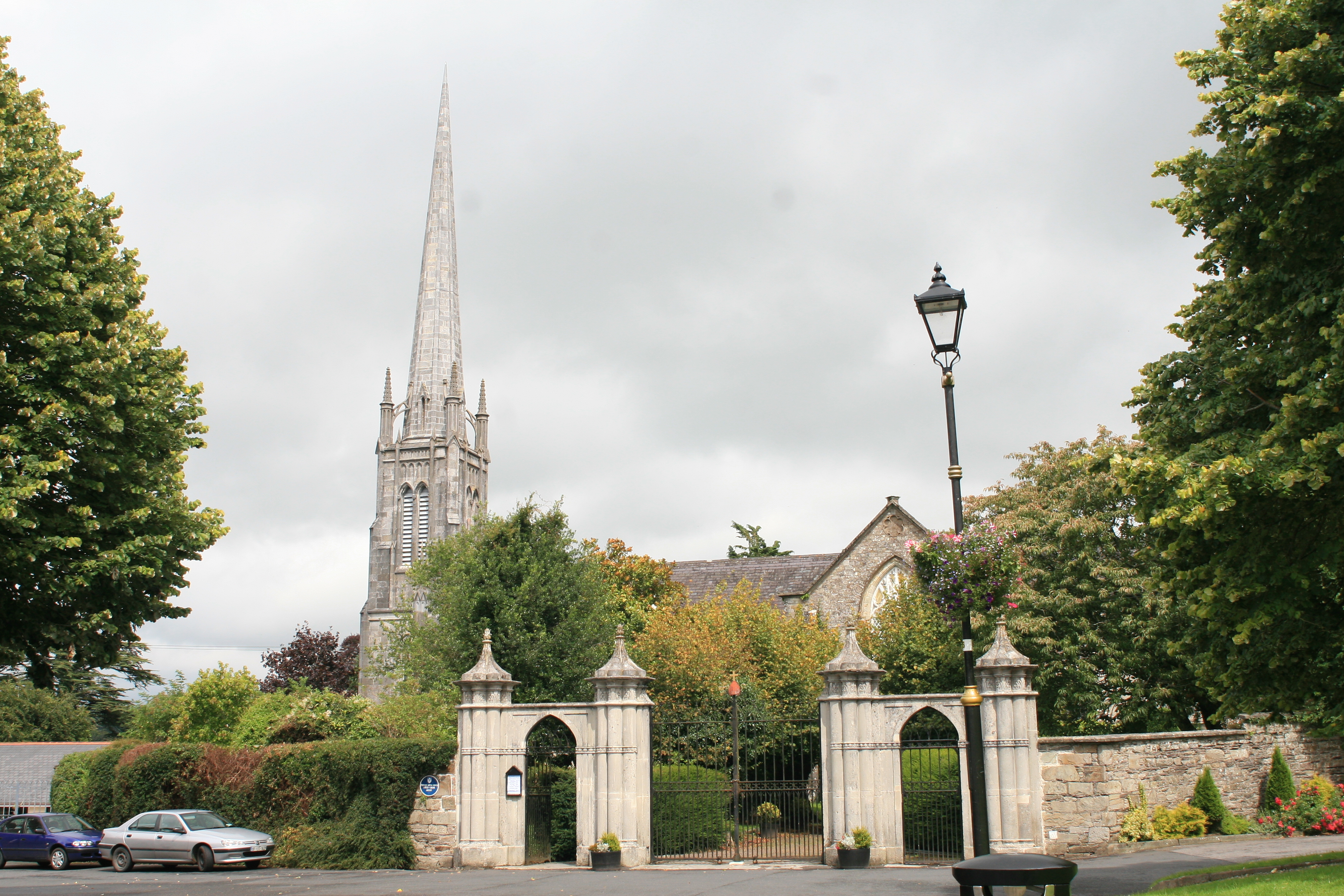|
Bangor Abbey
Bangor Abbey was established by Saint Comgall in 558 in Bangor, County Down, Northern Ireland and was famous for its learning and austere rule. It is not to be confused with the slightly older abbey in Wales on the site of Bangor Cathedral. History Foundation Comgall founded the monastery at Bangor about 558 A.D. in the County Down, on the southern shore of Belfast Lough. The ancient Annals differ about the exact year, giving various dates between 552 and 559. The earliest, the Annals of Tighernach, and the Annals of Innisfallen, give 558 A.D. as the date of the foundation.Hamilton, James. "A Short History of Bangor Abbey", ''Bangor Abbey Through Fifteen Centuries'' The name was sometimes written "Beannchor." The place was also called the "Vale of Angels," be ... [...More Info...] [...Related Items...] OR: [Wikipedia] [Google] [Baidu] |
Celtic Monasticism
Celtic Christianity is a form of Christianity that was common, or held to be common, across the Celtic languages, Celtic-speaking world during the Early Middle Ages. The term Celtic Church is deprecated by many historians as it implies a unified and identifiable entity entirely separate from that of mainstream Western Christendom. For this reason, many prefer the term Insular Christianity. As Patrick Wormald explained, "One of the common misconceptions is that there was a ''Roman'' Church to which the ''Celtic'' Church was nationally opposed." Some writers have described a distinct "Celtic Church" uniting the Celts (modern), Celtic peoples and distinguishing them from adherents of the Latin Church, Roman Church, while others classify Celtic Christianity as a set of distinctive practices occurring in those areas. Varying scholars reject the former notion, but note that there were certain traditions and practices present in both the Irish and British churches that were not seen ... [...More Info...] [...Related Items...] OR: [Wikipedia] [Google] [Baidu] |
Annals Of Tighernach
The ''Annals of Tigernach'' (abbr. AT, ) are chronicles probably originating in Clonmacnoise, Ireland. The language is a mixture of Latin and Old and Middle Irish. Many of the pre-historic entries come from the 12th-century MS, Rawlinson B 502.Hughes, ''Early Christian Ireland: Introduction to the Sources'', pp. 99-162. However, the real importance of the chronicle is for the period 489–766, 973–1003 and 1018–1178. These three fragments survive from the 14th-century MS Rawlinson B 488. The coverage of the period 766 to 973 is lost, but is thought to survive in abbreviated form in the '' Chronicon Scottorum'' (abbr. CT). The latter is defective for the period 718 to 804, but as much of its content is derived from the hypothetical ''Chronicle of Ireland'' (itself partly derived from the '' Iona Chronicle''), of which the ''Annals of Ulster'' (abbr. AU) and ''Annals of Inisfallen'' (abbr. AI) are also derived, we have some idea of what the entries contained. Kathleen Hughes ... [...More Info...] [...Related Items...] OR: [Wikipedia] [Google] [Baidu] |
Order Of Friars Minor
The Order of Friars Minor (commonly called the Franciscans, the Franciscan Order, or the Seraphic Order; Post-nominal letters, postnominal abbreviation OFM) is a Mendicant orders, mendicant Catholic religious order, founded in 1209 by Francis of Assisi. The order adheres to the teachings and spiritual disciplines of the founder and of his main associates and followers, such as Clare of Assisi, Anthony of Padua, and Elizabeth of Hungary, among many others. The Order of Friars Minor is the largest of the contemporary Religious institute#Categorization, First Orders within the Franciscan movement. Francis began preaching around 1207 and traveled to Rome to seek approval of his order from Pope Innocent III in 1209. The original Rule of Saint Francis approved by the pope disallowed ownership of property, requiring members of the order to beg for food while preaching. The austerity was meant to emulate the life and ministry of Jesus Christ. Franciscans traveled and preached in the ... [...More Info...] [...Related Items...] OR: [Wikipedia] [Google] [Baidu] |
Statutes Of Kilkenny
The Statutes of Kilkenny were a series of thirty-five acts enacted by the Parliament of Ireland at Kilkenny in 1366, aiming to curb the decline of the Hiberno-Norman Lordship of Ireland. Background to the statutes By the middle decades of the 14th century, the Hiberno-Norman presence in Ireland was perceived to be under threat, mostly due to the dissolution of English laws and customs among English settlers. These English settlers were described as "more Irish than the Irish themselves", referring to their taking up Irish law, custom, costume and language. The introduction to the text of the statutes claim, Original Anglo-Norman language, Anglo-Norman: ''... ore plusors Engleis de la dit terre guepissant la lang gis monture leys & usages Engleis vivent et se governement as maniers guise et lang des Irrois enemies et auxiant ount fait divers mariages & aliaunces enter eux et les Irrois enemyes avauntditz dont le dit terre et le lieg people de icelle la lang Engloies ligeance a ... [...More Info...] [...Related Items...] OR: [Wikipedia] [Google] [Baidu] |
The Bangor Sundial - Geograph
''The'' is a grammatical article in English, denoting nouns that are already or about to be mentioned, under discussion, implied or otherwise presumed familiar to listeners, readers, or speakers. It is the definite article in English. ''The'' is the most frequently used word in the English language; studies and analyses of texts have found it to account for seven percent of all printed English-language words. It is derived from gendered articles in Old English which combined in Middle English and now has a single form used with nouns of any gender. The word can be used with both singular and plural nouns, and with a noun that starts with any letter. This is different from many other languages, which have different forms of the definite article for different genders or numbers. Pronunciation In most dialects, "the" is pronounced as (with the voiced dental fricative followed by a schwa) when followed by a consonant sound, and as (homophone of the archaic pronoun ''thee'') ... [...More Info...] [...Related Items...] OR: [Wikipedia] [Google] [Baidu] |
Saint Gall
Gall (; 550 645) according to hagiographic tradition was a disciple and one of the traditional twelve companions of Columbanus on his mission from Ireland to the continent. However, he may have originally come from the border region between Lorraine and Alemannia and only met Columbanus at the monastery of Luxeuil in the Vosges. Gall is known as a representative of the Irish monastic tradition. The Abbey of Saint Gall in the city of Saint Gallen, Switzerland was built upon his original hermitage. Deicolus was the elder brother of Gall. Biography The fragmentary oldest ''Life'' was recast in the 9th century by two monks of Reichenau, enlarged in 816–824 by Wettinus, and about 833–884 by Walafrid Strabo, who also revised a book of the miracles of the saint. Other works ascribed to Walafrid tell of Saint Gall in prose and verse. Gall's origin is a matter of dispute. According to his 9th-century biographers in Reichenau, he was from Ireland and entered Europe as a ... [...More Info...] [...Related Items...] OR: [Wikipedia] [Google] [Baidu] |
Paisley Abbey
Paisley Abbey is a parish church of the Church of Scotland on the east bank of the River Cart, White Cart Water in the centre of the town of Paisley, Renfrewshire, about west of Glasgow, in Scotland. Its origins date from the 12th century, based on a former Cluniac monastery. Following the Reformation in the 16th century, it became a Church of Scotland parish kirk. History It is believed that Saint Mirin (or Saint Mirren) founded a community on this site in 7th century. Sometime after his death a shrine to the Saint was established, becoming a popular site of pilgrimage and veneration. The name Paisley may derive from the British language (Celtic), Brythonic (Cumbric) ''Passeleg,'' 'basilica' (derived from the Greek language, Greek), i.e. 'major church', recalling an early, though undocumented, ecclesiastical importance. In 1163, Walter fitz Alan, the first High Steward of Scotland issued a charter for a priory to be set up on land owned by him in Paisley. It was dedicated to S ... [...More Info...] [...Related Items...] OR: [Wikipedia] [Google] [Baidu] |
Saint Mirin
Saint Mirin was born in 565, is also known as Mirren of Benchor (now called Bangor), Merinus, Merryn and Meadhrán. The patron saint of the town and Roman Catholic diocese of Paisley, Scotland, he was the founder of a religious community which grew to become Paisley Abbey. The shrine of this saint in the abbey became a centre of pilgrimage. A contemporary of the better known Columba of Iona and disciple of Saint Comgall, he was prior of Bangor Abbey in County Down, Ireland before making his missionary voyage to Scotland. History and legend Much of what is known about Mirin is difficult to separate from fable. However, it is believed that he was of noble birth. While still a young boy, his mother took him to the monastery of Bangor Abbey in County Down in the north east of Ireland, where he was placed under the care of St. Comgall. St Mirin later took oversight of the monastery and thus became the prior of Bangor Abbey, where he accepted visitors and sojourners. Later, St ... [...More Info...] [...Related Items...] OR: [Wikipedia] [Google] [Baidu] |
Mo Chutu Of Lismore
Mo Chutu mac Fínaill (died 14 May 639), also known as Mochuda, Carthach or Carthach the Younger (a name Latinized as ''Carthagus'' and Anglicized as Carthage ),William Henry Grattan Flood (1908). " St. Carthage". In ''Catholic Encyclopedia''. 3. New York: Robert Appleton Company.The Roman Missal (Veritas 2011; ), p. 760 was abbot of Rahan, County Offaly, and subsequently, founder and first abbot of Lismore (), County Waterford.Johnston, "Munster, saints of (act. ''c''. 450–''c''. 700)." The saint's ''Life'' has come down in several Irish and Latin recensions, which appear to derive from a Latin original written in the 11th or 12th century. Life Through his father, Fínall Fíngein, Mo Chutu belonged to the Ciarraige Luachra, while his mother, Finmed, was of the Corco Duibne. Notes added to the '' Félire Óengusso'' (the Martyrology of Óengus) claim that his foster father was Carthach mac Fianáin, that is Carthach the Elder, whose period of activity can be assigned to t ... [...More Info...] [...Related Items...] OR: [Wikipedia] [Google] [Baidu] |
Robin Flower
Robin Ernest William Flower (16 October 1881 – 16 January 1946) was an English poet and scholar, a Celticist, Anglo-Saxonist and translator from the Irish language. He is commonly known in Ireland as "Bláithín" (Little Flower). Life He was born at Meanwood in Yorkshire, and educated at Leeds Grammar School. His parents, Marmaduke and Jane, were from families with Irish ancestry. He was awarded a scholarship to study Classics at Pembroke College, Oxford and graduated with first honours in 1904, before obtaining work as an assistant in the British Museum in 1906. It was during his early years at the museum that he began learning Irish, with the museum authorities supporting his study of the language in Ireland. He married Ida Mary Streeter in 1911. He worked from 1929 as ''Deputy Keeper of Manuscripts'' in the British Museum and, completing the work of Standish Hayes O'Grady, compiled a catalogue of the Irish manuscripts there. He wrote several collections of poetry, ... [...More Info...] [...Related Items...] OR: [Wikipedia] [Google] [Baidu] |
Columbanus
Saint Columbanus (; 543 – 23 November 615) was an Irish missionary notable for founding a number of monasteries after 590 in the Frankish and Lombard kingdoms, most notably Luxeuil Abbey in present-day France and Bobbio Abbey in present-day Italy. Columbanus taught an Irish monastic rule and penitential practices for those repenting of sins, which emphasised private confession to a priest, followed by penances imposed by the priest in reparation for the sins. Columbanus is one of the earliest identifiable Hiberno-Latin writers. Sources Most of what we know about Columbanus is based on Columbanus' own works (as far as they have been preserved) and Jonas of Susa's ''Vita Columbani'' (''Life of Columbanus''), which was written between 639 and 641. Jonas entered Bobbio after Columbanus' death but relied on reports of monks who still knew Columbanus. A description of miracles of Columbanus written by an anonymous monk of Bobbio is of much later date.O'Hara, Alexander, an ... [...More Info...] [...Related Items...] OR: [Wikipedia] [Google] [Baidu] |
Mo Sinu Moccu Min
Mo Sinu moccu Min, also known as Sinilis, Sinlán Moccu Mín (died 610) was an Irish scholar. Fifth abbot of Bangor, "Mo-Sinu maccu Min ... was the first of the Hibernenses who learned the computus by heart from a certain Greek. Afterwards, Mo-Chuoróc maccu Neth Sémon, whom the Romani styled doctor of the whole world, and a pupil of the aforesaid scholar, in the island called Crannach of Duin Lethglaisse (Downpatrick), committed this knowledge to writing, lest it should fade from memory." This computus is thought to have been an ''oro numerorum.'' It is thought that he is identical to the Sinilis who tutored Columbanus, according to Jonas of Bobbio. If so, he would have taught Columbanus in the years prior to his departure to France about 585. Robin Flower wrote of him that "It is clear that particular attention was paid to historical studies at Bangor, and the earliest Irish chronicle was probably a production of that house. It has been attributed with good reason to Sinl ... [...More Info...] [...Related Items...] OR: [Wikipedia] [Google] [Baidu] |









